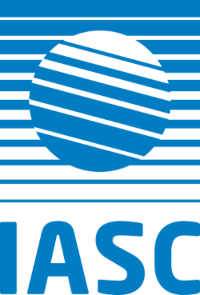The 16th International Circumpolar Remote Sensing Symposium (ICRSS) provided a platform for the exchange of current applied research and best practices, the presentation of new technology and further innovation, and the advancement of international cooperation in the circumpolar regions of the world. This symposium dealt specifically with remote sensing applications in the polar environments, both Arctic and Antarctic. Earth’s Polar Regions feature cold-climate environments characterized by unique landscapes, biota, and processes. Many of these features and dynamics are Cryosphere-driven and either are already subject to or have the potential for fundamental and rapid changes in a warming world. Earth observation technologies provide crucial tools to understand and quantify these changes.
The 16th ICRSS took place at the University of Alaska Fairbanks (UAF) in Fairbanks, Alaska between 16–20 May 2022. The week-long symposium saw 102 registrants from 12 countries, and attendance—with both in-person and virtual options—fluctuated between 50 to over 80 attendees at any one time. The science program included two full days and two half days of scientific presentations, a half day program consisting of a panel discussion, and a poster session. Oral presentation sessions focused on Arctic Land Cover, Sensor Development and Operational Services, Arctic Coasts and Communities, Climate Change and Climate Data Records, Glaciers and Seasonal Snow Cover, Observing Permafrost, Floating Ice, and Microwave Remote Sensing. The 49 oral presentations were given by both in-person and virtual attendees. The poster session was only held in-person; however, poster presenters were given the opportunity to give a flash talk of their poster that was streamed online. This gave virtual attendees the opportunity to ask questions to the 32 poster presenters.
Integrating Science and Art
A new feature at this symposium was a dedicated integration of Arctic-based art. Led by Dr. Mary Beth Leigh (UAF), each day had a dedicated theme that tied into various components of remote sensing. A slideshow of visual art was played during each break, and there were two musical performances, and a poetry reading throughout the week. A highlight was the remote sensing creative movement activity, where participants took turns being a satellite-based sensor, satellite receiving antenna, and the scientist interpreting the "mapping" of the interior of the conference ballroom. Some of the artists who showcased their work are also scientists and the symposium provided a new type of venue to present their artistic endeavors. This was the first time many of the organizers or participants had experienced science-themed art integration into a scientific conference, which also provided a welcome change of pace to a traditional scientific program. All artists were compensated for their time.
Navigating an International Conference during COVID
The 16th ICRSS was originally to be held in September 2020, but was postponed on three occasions until now because of COVID. We are delighted to share that the 16th International Circumpolar Remote Sensing Conference was successful in being COVID-19 safe, harmonizing a hybrid event, and adding new programming aimed at integrating art and science throughout the week. All participants received five at-home COVID-19 antigen tests to be used daily within their ICRSS welcome bags and extra tests were provided later in the week for those who needed them. COVID-19 update emails were sent daily to participants. Other COVID-19 mitigation strategies included masking (with masks available to all participants), consistent sanitization of all microphones between each use, and hand sanitizer available around the event space. Seats were spread out and COVID-safe announcements and reminders were given regularly during the week. Feedback from participants has been overwhelmingly positive in all aspects. We hope sharing our experiences will aid in the organization of future scientific events within our emerging post-pandemic world.
Three Scientific Bullets:
- Remote sensing plays an essential role in detecting and quantifying substantial changes in some of Earth’s most remote and inaccessible regions.
- Open-access data policies and data publishing stewardship foster longer and denser time series analysis and a better understanding for short- versus long-term cryosphere dynamics.
- International collaboration—from the level of individual researchers and projects to joint major field or observation campaigns—is essential for synergizing scientific work in polar regions.
